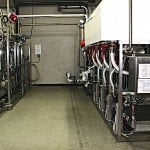Infrastructure is one of those things people don’t think about much until something goes wrong. And there is plenty wrong with the state of infrastructure in Toronto, despite the province’s having spent more than $85 billion on roads, bridges and the like since 2003. In Toronto, with thousands of kilometres of streets, transit lines, sewers, water mains, and hundreds of bridges and public buildings, 50 per cent of the current capital budget of $15.26 billion is devoted to infrastructure. Transit alone consumes 50 per cent of that, including the Spadina subway extension. Severe gridlock and congestion in the Greater Toronto and Hamilton Area is estimated to cost $6 billion a year in lost productivity.
Now the provincial government is proposing new legislation that it says will support “long-term strategic infrastructure planning” to support the economy. The Infrastructure for Jobs and Prosperity Act would require the government to “regularly” table its long-term infrastructure plans in the legislature, covering a period of at least ten years.
The legislation would also require that apprentices be “involved” in the construction of “certain provincial infrastructure projects.”
The government, according to its press release, has already committed $35 billion to infrastructure projects across the province over the next three years.
The government has so far identified three new sources of revenue for this infrastructure spending: green bonds, announced two weeks ago by the premier; a new Trillium Trust which will be funded by government asset sales; and investment by pension funds in infrastructure. On the last point, the government would have to relax current rules that limit the amount of investment to 30 per cent of the voting shares of a corporation in a single company. If passed, the law would allow a pension fund to buy the entire equity of a particular project.
According to finance minister Charles Sousa, the province has an infrastructure deficit of $100 billion. More than half (60 per cent) of everything that needs to be repaired or replaced in this province is over 50 years old. The $35 billion spent over the next three years will barely make a dent. The proposed legislation would ensure that future governments do not avoid the problem of infrastructure, something the premier has said past governments were guilty of doing. Premier Wynne has made transit and infrastructure a priority since taking office last spring.
The Minister of Infrastructure, Glen Murray, says planning has to be better, more co-ordinated, and more strategic.
“The reason the 401 is eighteen or twenty lanes is because it was never planned as a transportation route, but as a highway route,” he told reporters. “The reason you can’t run transit from many GO stations is because the land use isn’t compatible with higher-order transit. So we’re going to change those things.”
































